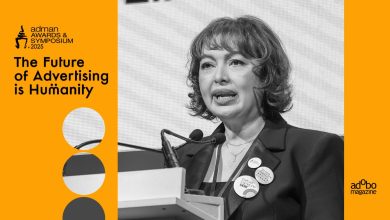PHILIPPINES – JUNE 30, 2011 – A monumental event late this year promises to take the advertising industry to a place it has never gone before. From November 16 to 19, AdCongress22 will be in CamSur for the first time. Already technically pioneering with its widely-digital access, AdCongress22’s creative promotions are just as thrilling.
Working on the theme “Change the Game” the Creative Committee headed by Merlee Jayme, DM9 JaymeSyfu Chief Creative Officer, along with Leo Burnett’s creative pitch-winning team headed by its Executive Creative Director Raoul Panes are churning out the ad materials for AdCongress22. The first TVC media campaign debuted in early June.
“Waterworld” features a youth slowly navigating dirty floodwaters. His expression is grim, and his environs look bleak. Clutching a torn-off piece of plywood to use as stepping board, the flimsy contraption is inutile against the drowning desolation. But the story does not end there. Unstable bare feet transform into a well-shod pair atop a flashy wakeboard.
From the 39th poorest province in the Philippines in 2004, to the No. 1 tourist destination in 2009 – CamSur is 2011’s hot ticket to AdCongress22. “Waterworld” conveys a rags-to-riches story parallel to the rise and growth of the province.
Rising to the challenge of showcasing Leo Burnett Manila’s creativity is Raoul Panes. A native of Naga, a mere 20 minutes from Pili town where the CamSur Watersports Complex (CWC) is located, the ECD is excited to travel the 370-odd kilometers to the venue.
“CamSur is an inspiration. It epitomizes game change, as the Executive Committee smartly identified when they were deciding on the venue. And we never forgot,” says Panes.
“We knew it was tempting to go into the clichés of game change, go into high tech mode. But we knew that the campaign must go past the question marks on CamSur first The remarkable story of the rise of one of the country’s poorest provinces needs to be told,” he adds.
In CamSur, a huge crowd is converged in front of a tiny TV watching regular Sunday night fare when “Waterworld” is shown. The aftermath is a sweeping sense of exhilaration. Princess Galura, head of CamSur Governor LRay Villafuerte’s organizing committee was in CWC when the TVC first aired. Getting goosebumps from the burst of emotion, Galura revels in the people’s anticipation of the event.
“People are really wowed by the ad congress. These are just regular people who are so proud of what they have especially with what they have gone through – from nothing to something,” Galura shares.
Created to raise awareness for AdCongress22, the first TVC – Waterworld” – does not disappoint. Anticipation of the next TVC is heating up, the promise of another thriller in the air.
“Game-change doesn’t happen overnight. It is driven by passion. And I’d like to believe that adversity fuels passion. One needs to be in a state of dissatisfaction for one to be energized to excel,” declares Panes.
(Aye P. Ubaldo)
Sponsor







